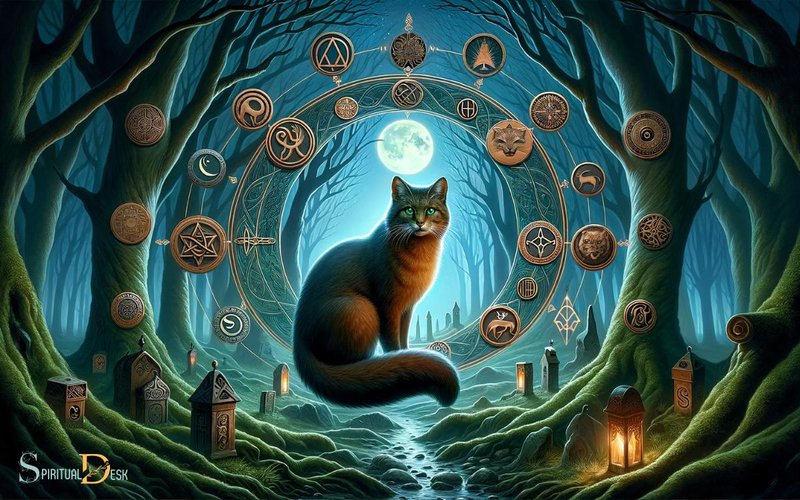
You might be wondering why these stories matter. Well, they often reflect the values, beliefs, and environmental concerns of the cultures from which they emerge. Whether seen as a diligent provider, a wise teacher, or even a mystical figure, the fisher’s role varies widely. It’s a bit like how a simple cup of coffee can be both a morning routine and a moment of connection with a friend. The representation of the fisher can shift depending on where and when the story is told, highlighting the incredible diversity of human experience. Let’s dive deeper into how the fisher appears in different cultures and what these representations say about us.
The Fisher in Native American Culture
In many Native American cultures, the fisher embodies a deep respect for nature and a harmonious existence with the environment. For tribes living near rivers and lakes, the fisher often symbolizes not just sustenance but also spiritual connection. Fishing isn’t merely about catching food; it’s a sacred act that honors the water, the fish, and the ecosystem.
The stories told by elders often feature the fisher as a wise character who teaches younger generations about sustainable practices. They share important lessons about respecting wildlife and understanding the rhythms of nature. For example, in some tribes, there are legends about fish being powerful spirit animals that guide fishermen to the best catch.
Additionally, fishing rituals can be an important part of community life. Gatherings around fishing events enable sharing of techniques, stories, and a bond that strengthens tribal identity. Honestly, these practices emphasize the need to live in balance with nature, and they remind us that our actions have consequences—important lessons for all of us today.
The Fisher in European Folklore
In European folklore, the fisher often takes on a more mythical or heroic aspect. Many tales depict the fisher as a character who embarks on adventurous quests, battling sea monsters or traversing enchanted waters. Stories like those of King Arthur and the Fisher King illustrate how fishing can symbolize quests for knowledge, redemption, or even spiritual enlightenment.
For instance, in Arthurian legends, the Fisher King is a wounded ruler who relies on the magical fish from his kingdom’s waters. His well-being is directly tied to the health of the fish population, creating a poignant metaphor about leadership and responsibility. The health of the land and its resources reflects the state of the king—an idea that resonates with modern environmental concerns.
In many coastal communities, fishing festivals celebrate the rich bounty of the sea. These events often include competitions, music, and traditional stories, tying together the past and present. Through these festivities, you can see how fishers are viewed as both providers and storytellers, keeping the spirit of their culture alive.
Asian Perspectives on Fishing
Fishing has a prominent place in many Asian cultures, where it’s often intertwined with agriculture and spirituality. In Japan, for example, the fisher is widely celebrated, and fishing techniques have been passed down through generations. Traditional fishing methods such as “tuna fishing” and “cormorant fishing” showcase a blend of skill and artistry.
You might come across stories in Chinese folklore where fish represent prosperity and abundance. The annual Chinese New Year often features fish as a symbol of wealth, with the word for fish (鱼, yú) sounding similar to the word for surplus (余, yú). These connections highlight how fish are woven into the very fabric of these cultures, not just as resources but as vital symbols of good fortune.
Additionally, in some Asian myths, fishers are portrayed as humble heroes who bring balance to their communities. They’ve learned to appreciate nature’s cycles and respect the fish they catch, representing a harmonious relationship with the environment. Such stories inspire respect for nature and remind us of our responsibility to protect it.
Modern Representations of the Fisher
Today, the representation of the fisher continues to evolve. In contemporary culture, the fisher is often depicted in media, framed as either a rugged individualist or a family figure who provides food and adventure. Shows like “*Deadliest Catch*” present the dangers and thrills of commercial fishing, showcasing the harsh realities of this profession.
Social media platforms have also become a space for modern fishers to share their experiences, tips, and stories. It’s a community where individuals connect over shared passions, regardless of geographical boundaries. This global sharing of fishing tales helps keep the tradition alive, making it relevant for new generations.
Interestingly, the fisher is now often connected to sustainable practices as more people become aware of environmental issues. Movements promoting catch and release and responsible fishing are gaining traction, emphasizing the importance of preserving aquatic ecosystems for future generations.
The Fisher’s Place in Art and Literature
Art and literature have long celebrated the fisher, capturing both the beauty and the challenges of the lifestyle. From paintings that depict serene fishing scenes to novels that explore the life stories of fishers, the theme resonates with many. For example, in Hemingway’s “*The Old Man and the Sea*,” the protagonist is not just a fisher but a symbol of perseverance and the human spirit’s struggle against nature.
Many artists find inspiration in the tranquil moments of fishing, using it as a metaphor for patience, solitude, and reflection. The act of fishing can become an allegory for life’s larger struggles, making it relatable across different experiences and backgrounds.
The fisher is also a common subject in local folklore and storytelling traditions. These tales often reflect community values, sharing wisdom through generations. Whether it’s a cautionary tale about the perils of overfishing or a story that celebrates a great catch, these narratives help shape how we view the fisher today.
As we’ve explored, the fisher plays a multifaceted role across various cultures and traditions. From Indigenous beliefs that emphasize respect for nature to European legends and modern portrayals, the representation of the fisher reveals much about our relationship with the environment. Through stories, art, and community practices, we see that the fisher is more than just a character—it’s a symbol of survival, tradition, and connection.
In a world increasingly concerned about sustainability, the fisher’s lessons hold more weight than ever. By honoring the past and looking to the future, we can appreciate the rich tapestry of fisher culture and ensure these traditions—and the waters they depend on—continue for generations to come.

